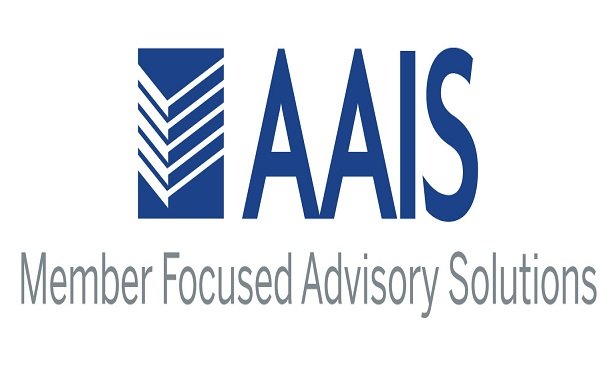The insurance industry is helping birth new legislation thatwould address one of the most vexing issues for insurers in theFederal Reserve's stable of supervision.
|H.R. 2140, Insurance Capital and Accounting Standards Act of2013, introduced in the House by Rep. Gary G. Miller, R-Calif., andCarolyn McCarthy, D-N.Y., would offer relief from the Dodd-FrankAct requirement that the Fed's proposed capital standards for banksmust apply also to nonbanks, such as insurers, if they fall underFed supervision.
|The bill was introduced May 23.
|Insurers that are or could be under the Fed's supervisioninclude those with thrift holding companies such as State Farm andTIAA-Cref and some banks insurance subsidiaries, plus any insurerdesignated systemically important financial institution (SIFI).
|Insurers who have thrifts have tried to de-thrift, somesuccessfully, others not, to get out from under therequirement.
|Specifically, the bill would still preserve capital standardsfor insurers but make sure that the capital standards for insurancecompanies are aligned with their asset and risk profile. Thecapital would be matched to the liabilities and risk-based capital,the hallmark of insurers would hold sway.
|The issue is important for insurers, who worry that bank capitalrules don't make sense for their structure and business and couldactually hurt their solvency if imposed.
|Miller says the Federal Reserve “is mixing apples and oranges byimposing bank-centric rules on insurance companies, which havecompletely different business models and capital structures. Aswritten, this proposal will lessen the availability and increaseoverall costs of insurance products and services to consumers andbusinesses in my district and across the country.”
|Last year, the Federal Reserve Board proposed new capitalrequirements for all financial institutions under Basel III.
|The Fed's proposal would require insurance companies to meet thesame capital standards as banks, without regard to the distinctlydifferent risk profile and business model of insurance companies,under Section 171 of the Dodd-Frank Act, according to Miller.
|Life insurance companies should always be subject to capitalrules designed specifically for the types of risks they assume andinsurance risk-based capital is the appropriate benchmark for lifeinsurers, argue insurers.
|Indeed, insurers have been trying to find a way out of Section171 for some time, and the Federal Reserve lawyers have also beenlooking at the language. Many letters have been written fromindustry, a group of senators led by Sen. Sherrod Brown, D-Ohio,even Sen. Susan Collins, R-Maine, for whom Section 171 is named, inattempts to alleviate the requirements. More recently, U.S. SenateBanking, Housing and Urban Affairs Committee Chairman Tim Johnson,D-S.D., and Ranking Member Mike Crapo, R-Idaho, joined the manyvoices in Congress protesting proposed capital standards underBasel III as applied to community banks, and for that matter,insurance companies with thrifts, in a February letter.
|The Johnson letter to the Federal Reserve, the Office of theComptroller of the Currency (OCC), and the Federal DepositInsurance Corp., urged the regulators to carefully consider theimpact of the proposals on community banks and insurance companies,and to avoid unintended consequences.
|Another section of Dodd-Frank appears to give flexibility tobank regulators in crafting standards for nonbank companies, whilesection 171, which appears airtight, takes it away. Still, no routehas yet been abandoned as the industry's top legal team tries toparse Section 171 in a way that would excuse insurance companiesfrom what the industry and Miller call “one size fits all”requirements. After many months, no relief has been offered as theletters get longer and more specific.
|All told, there are about two dozen savings and loan holdingcompany (SLHC) insurers and potential two to three large insurersthat will become SIFIs in the next year or so. PrudentialInsurance, MassMutual and Northwestern have dethrifted and ThePrincipal is in the process of doing so.
|But even if there are only a few, and there are a few largeinsurers possibly subject to the Federal Reserve's capitalproposals now, many in the industry worry the requirements for afew would change the market for all by pushing others to adopt morestringent capital, or create product pricing and portfolio tradingdiscordance
|“The issue has always had support from both Democrats andRepublicans, and the bill is also bipartisan with Reps. Miller andMcCarthy as co-sponsors. That suggests a good chance of the billbeing able to move,” stated Steve Brostoff with the AmericanCouncil of Life Insurers (ACLI).
|“The Federal Reserve Board, under its interpretation of theDodd-Frank Act, has proposed applying the Basel III bank capitalrules to such companies. This would be wholly inappropriate. Banksand life insurers have significantly different balance sheetcharacteristics and business models,” stated the ACLI, which isstill reviewing the bill.
|Stephen Zielezienski, general counsel for the American InsuranceAssociation (AIA), noted that H.R. 2140 addresses the concern of“inappropriate capital standards.”
|“Regulated property-casualty insurers present little, if any,systemic threat and should not be subjected to heightenedprudential supervision at the federal level. The industrybusiness model, the supporting regulatory architecture, the largenumber of competitors, and conservative management and investmentpractices employed in the property-casualty insurance industry helpreinforce that conclusion,” the AIA general counsel said.
|The NAIC is looking at the bill, but had no comment at thistime.
|The Fed did not respond by press time. The Senate BankingCommittee did not respond with any word on whether it wouldconsider a companion bill.
|The office of Sen. Brown., who wrote last fall that “anyregulatory regime must acknowledge how insurance companies relyupon long term assets to find long-term liabilities,” in contrastto banks short-term funding needs, said he was reviewing thebill.
Want to continue reading?
Become a Free PropertyCasualty360 Digital Reader
Your access to unlimited PropertyCasualty360 content isn’t changing.
Once you are an ALM digital member, you’ll receive:
- All PropertyCasualty360.com news coverage, best practices, and in-depth analysis.
- Educational webcasts, resources from industry leaders, and informative newsletters.
- Other award-winning websites including BenefitsPRO.com and ThinkAdvisor.com.
Already have an account? Sign In
© 2024 ALM Global, LLC, All Rights Reserved. Request academic re-use from www.copyright.com. All other uses, submit a request to [email protected]. For more information visit Asset & Logo Licensing.








